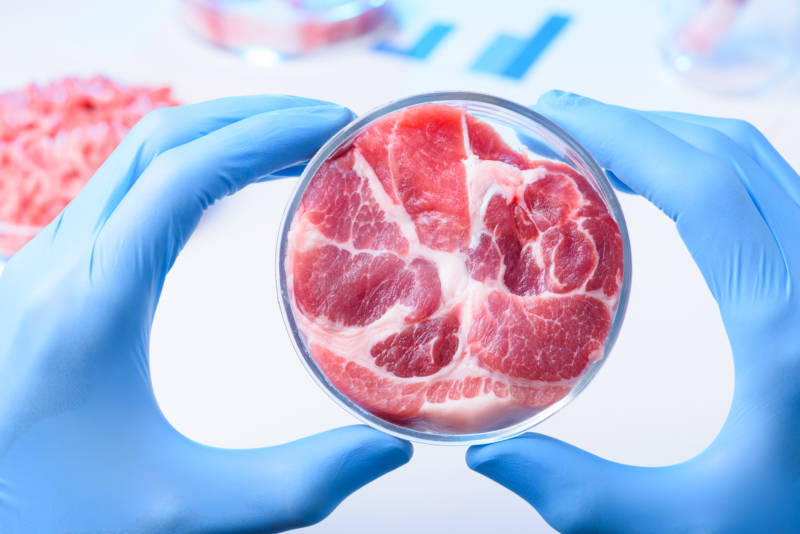Scientists begin with a biopsy of animal muscle tissue. Technicians collect stem cells from the tissue, multiply them dramatically and allow them to differentiate into fibers that eventually bulk up and form muscle tissue.
Voila! Sirloin without a slaughterhouse.
Well, not yet.
For now, companies focus on ground products like chicken nuggets, sausages and hamburger. This first line of offerings will likely include fillers, flavors and additives to help lab grown meat look, taste and feel the way people expect it to. Before scientists can create pork chops and filet mignon, they must learn how to design and replicate blood vessels.
From Yuck…to Yum!?!
Customers’ aversion to genetic engineering and artificial flavors in food could make it tricky to market lab-grown meat. Cultured meat companies are quick to point out that labs allow much more control over flavor and food safety than farms do. Also, their products could save farm animals from enormous suffering and help the planet by reducing the number of methane-producing cattle and other livestock.
Farms generate a hefty carbon footprint. Raising animals in California emits 8 percent of the state’s total greenhouse gases. That’s more than all the state’s oil refineries combined.
In theory, lab-grown meat is a sensible solution because it removes the need for vast acres of land to grow cattle, chickens and pigs. Not to mention chemical fertilizers that pollute air and water. That said, the environmental reality is much less certain.
A new study suggests lab-grown meat could accelerate climate change more than regular beef does. The claims, pro and con, are based on theoretical models. We won’t know what cultured meat on a commercial scale requires until labs are able to feed large populations.
When Can I Order a Lab-Grown Burger?
Bay Area CEOs promise their products will be ready for public consumption in a year or two. Industry buzz suggests that’ll happen in Asia first. In countries like Singapore and Japan – where land is limited and meat imports are very expensive – excitement is brewing. Asian cultures tend to embrace, instead of scoff, novel foods.
But the industry faces significant scientific, regulatory, manufacturing, economic and cultural hurdles before it catches on in the U.S.
There’s no proof that producing meat in labs could endanger human health, but the federal Food and Drug Administration would need to regulate an entirely new industry. There’s also pushback from traditional farmers and ranchers who argue vehemently against labeling these products as meat. Marketers will have to coax consumers past the gross-out factor.
Finally, companies need to create a commercially viable product. Mark Post, the co-founder of Mosa Meat, developed the first lab-grown burger in 2013. That patty cost $300,000. Prices have dropped a lot since then, but not to a level that can compete with U.S. beef on the hoof. For all these reasons, food industry skeptics suggest it will be at least a decade or even two before diners can order cultured meat on local menus.
